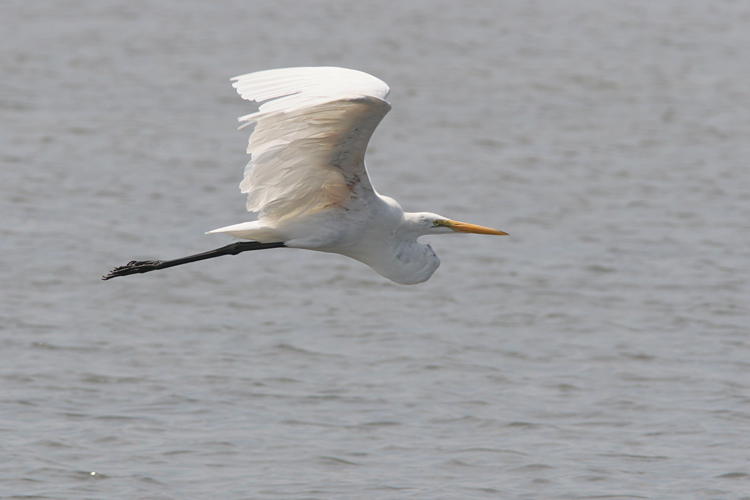
Date: 2007-08-25
Lens: Canon 300mm IS F4 + 1.4x II Converter

 Great Egret
Ardea alba
Great Egret
Ardea alba
 Description
DescriptionIn our region, this majestic bird is less common than the Snowy Egret. This is mainly due to habitat destruction. At the start of the 1900's, this bird was nearly eradicated for its long lacy plumes, which were used for fashion accesories. These birds mainly feed on fish and amphibians, but also go for small mammals. Like other egrets, they hunt with great precision and speed.
All white plumage. Long yellow bill. Blue patch between bill and eye. Black legs and feet. Has long white back plumes during breeding. Larger than a Snowy Egret. Sexes similiar. 36 to 40 inches in length.
Open fields, short grass meadows near water, gravely shorelines.
 Nesting
Nesting3-5 pale blue-green eggs with a 23-26 day incubation period. Fledging occurs 42-49 days after hatching. The nest is a platform of sticks placed in a tree. Great Egrets nest in colonies (often with other heron species).